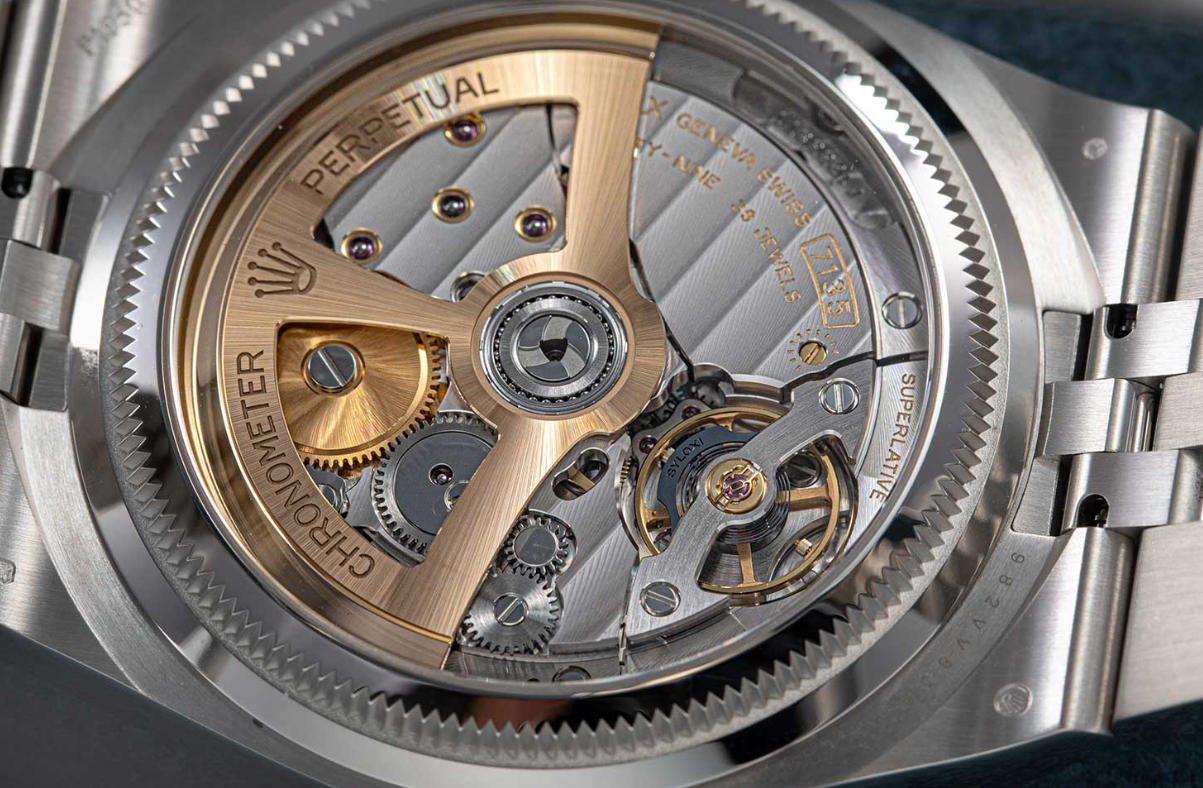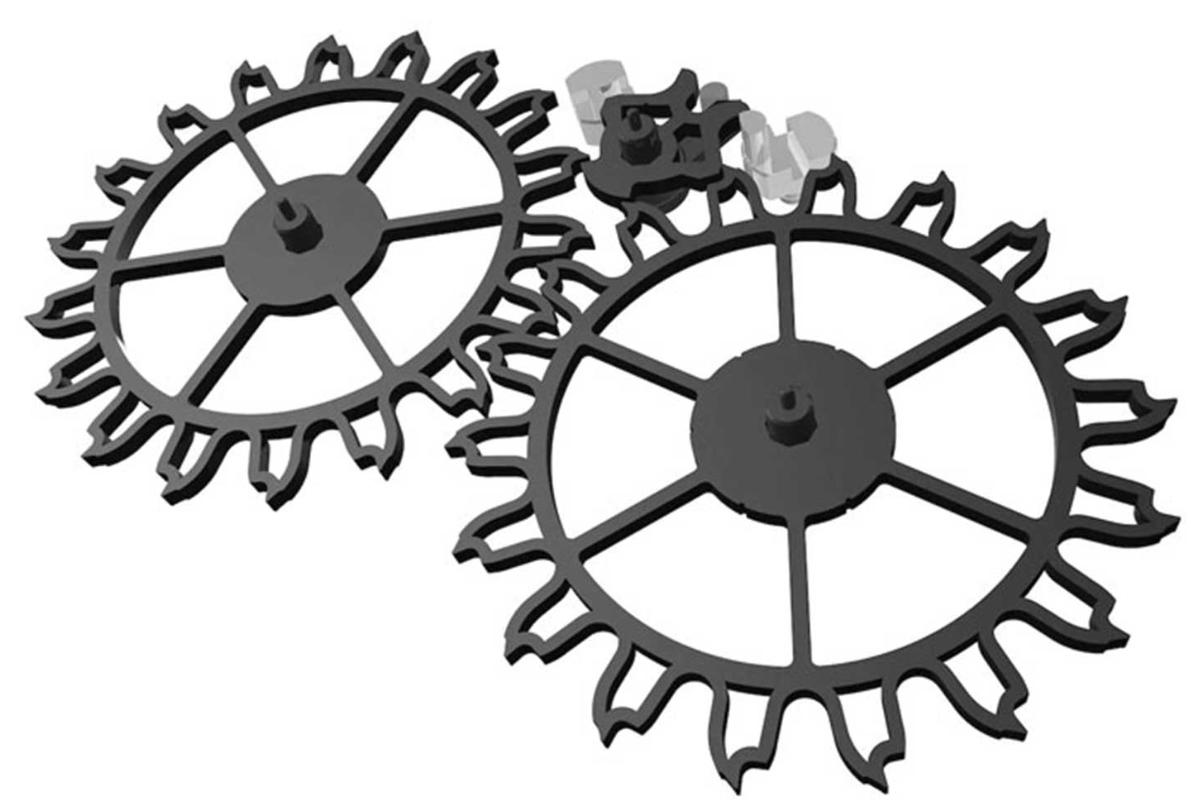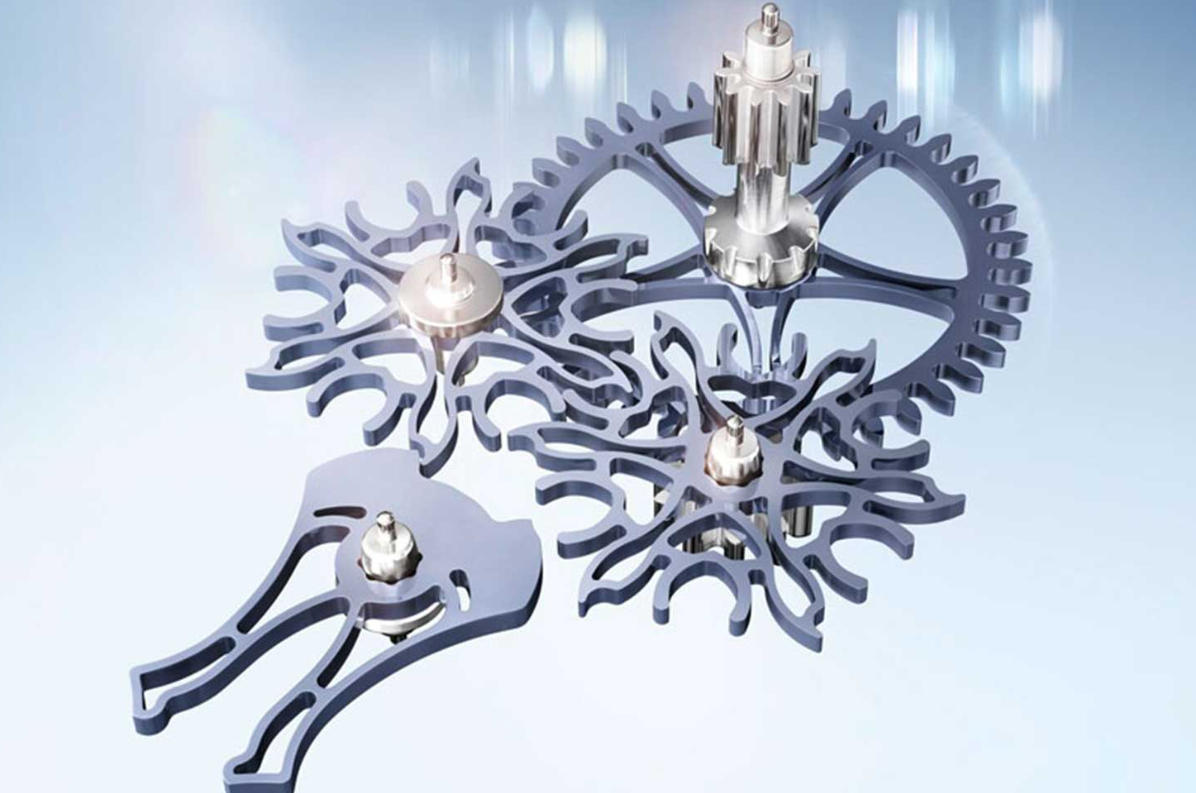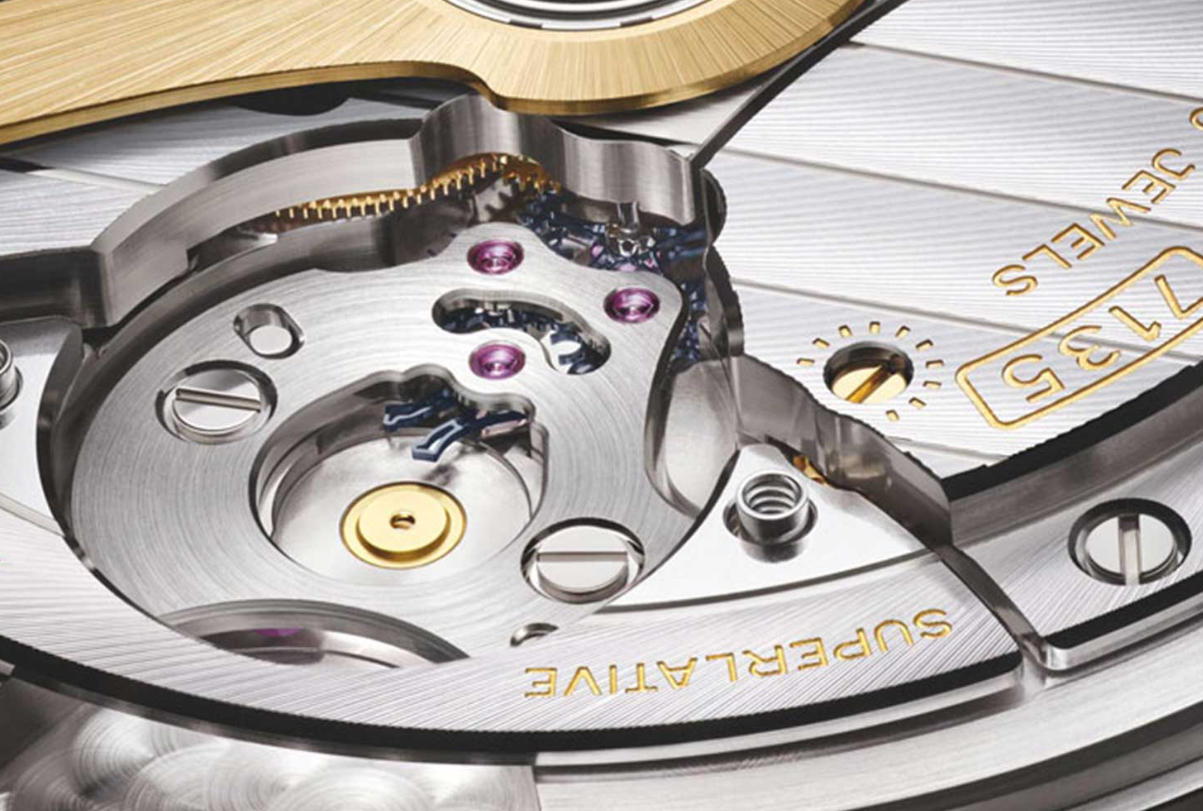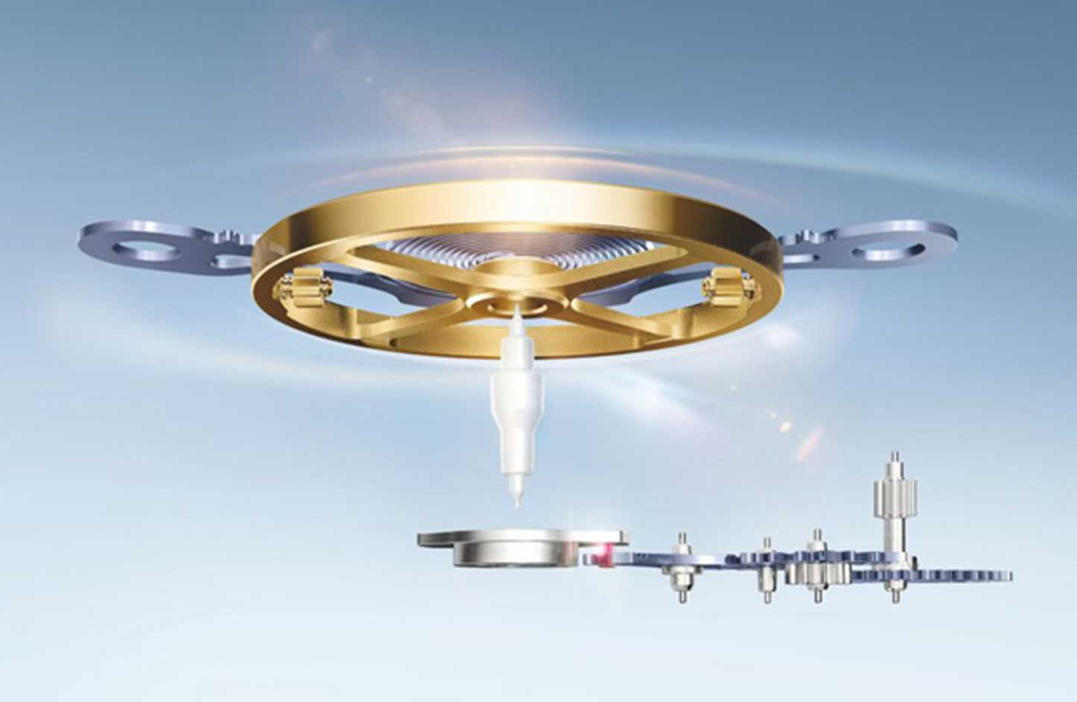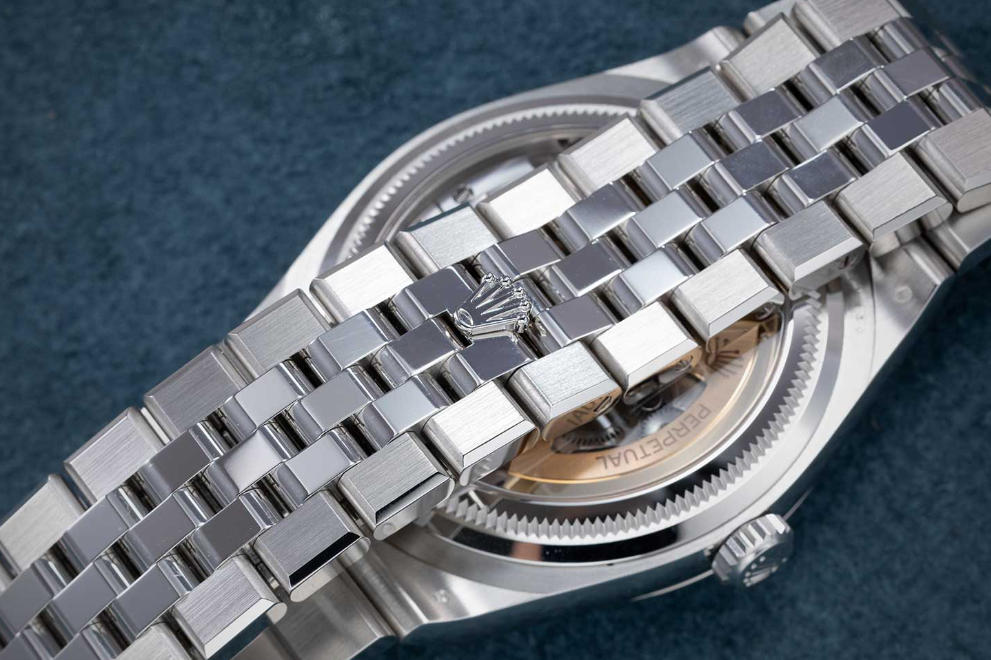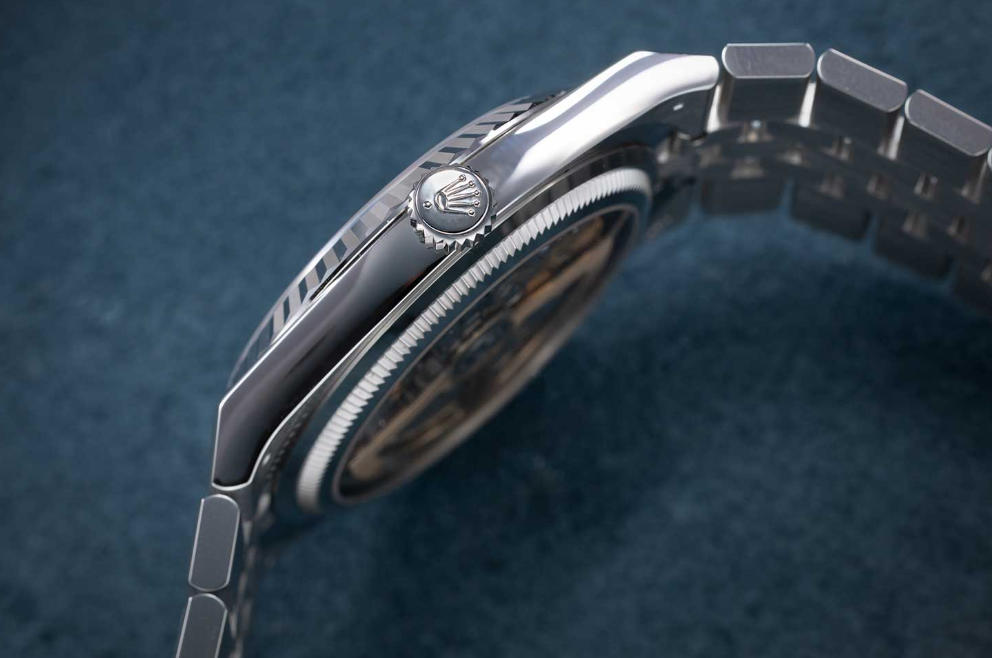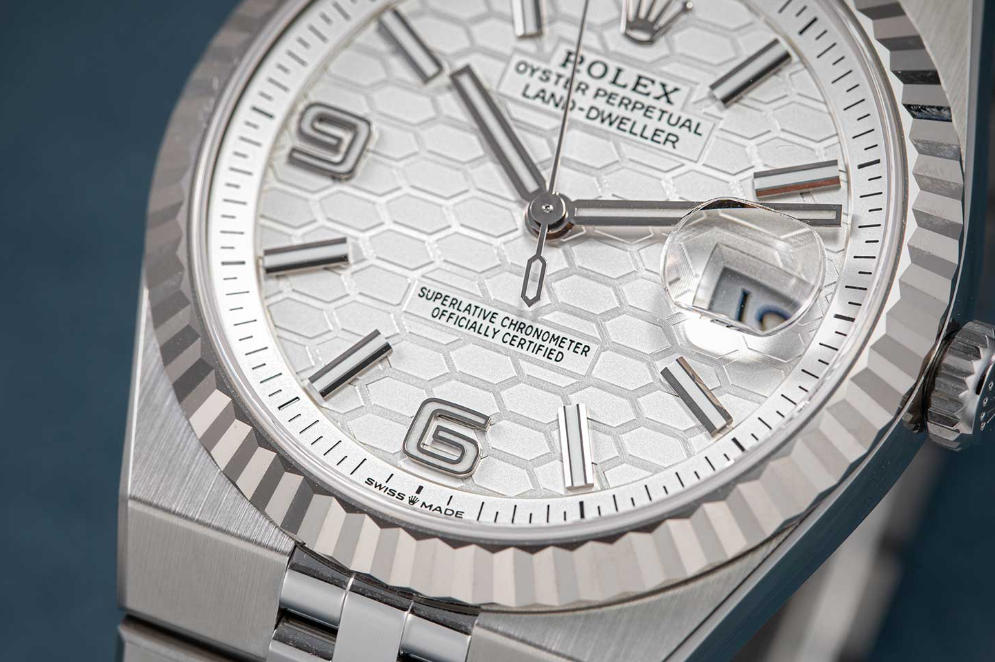blog, Perfect Replica Watches, Rolex
A Closer Look: Cheap Replica Rolex Land-Dweller Watches And The Dynapulse Escapement
At Watches & Wonders this year, Rolex has released the best fake Rolex Land-Dweller watches, an integrated bracelet sports watch which features a new tonneau case along with a flat-link Jubilee bracelet. It comes in both 40mm and 36mm sizes across three metals, and is equipped with Rolex’s first-ever high-frequency movement, the calibre 7135, featuring the groundbreaking Dynapulse Escapement.
Besides being an entirely new model and an integrated bracelet watch from the Crown, the 1:1 replica Rolex watches also marks a major milestone in both the history of Rolex and in the history of horology. It debuts a revolutionary silicon escapement known as the Dynapulse. This is paired with an entirely new balance assembly unit engineered with magnetic immunity in mind. Together, these developments represent a radical departure from tradition for Rolex, a brand known for its deliberate evolution rather than sudden leaps.
The Calibre 7135
The new Calibre 7135 is based on the Calibre 7140 found in the 1908. It measures 4.68mm in height which is slightly thicker than 7140 at 4.13mm without date. The Calibre 7135 vibrates at 36,000vph, which is in contrast to the standard 28,800vph beat rate for modern movements. The reason for a higher frequency for an oscillator is that, all things being equal, the perfect Rolex copy watches with a higher frequency will generally exhibit better rate stability as it averages out minor disturbances more effectively.
Each oscillation acts as a sampling point for timekeeping, and with more oscillations per second, the movement can better resist the influence of shocks. As a result, the buy clone Rolex watches is more likely to maintain accuracy over time, especially in dynamic, real-world conditions. A fast-beat, series-produced movement remains a rarity in modern watchmaking, placing the Calibre 7135 in a rather exclusive category of watches.
However, the Calibre 7135 also has something even less often seen in horology – a novel escapement and thanks to it, the movement manages to eke out a relatively long power reserve of 66 hours despite its high beat rate. The high beat rate is likely part of the rationale behind Rolex’s decision to develop an entirely new escapement that exists alongside the Chronergy. The going train in the Calibre 7135 comprises of five wheels, with the finishing wheel in silicon to reduce inertia and optimise energy transmission.
Dynapulse Escapement
The new Dynapulse silicon escapement inescapably brings to mind the first-ever silicon escapement in watchmaking, the Ulysse Nardin Dual Direct escapement which has been discontinued permanently in favour of the Swiss lever. The Dynapulse is impressive in the way it decisively addresses the shortcomings of the Ulysse Nardin Dual Direct by a fundamental rethinking of the dynamics between the lever and escape wheels.
The core difference lies in the structure of interaction between the escape wheels and the lever, particularly in how impulse and locking are executed, and how energy is transmitted to the balance.
In the Ulysse Nardin Dual Direct escapement, there are two escape wheels, meshing with each other, and only one is directly driven by the gear train. The other is passively carried along through the meshing. The lever is alternately locked by one wheel and impulsed by the other, in a symmetrical see-saw motion. However, the locking and impulse functions are handled by different teeth on the same escape wheel and on different contact surfaces of the lever. For example, one tooth of escape wheel delivers the impulse via a contact surface on the lever, and the next tooth, offset in angular position, locks the lever against a different surface. The same applies when the roles switch and the second escape wheel becomes the active wheel.
This means that during operation, the lever must travel from the impulse contact to the locking contact, across a small angular distance, before the locking takes effect. Similarly, after being locked, the lever is released by the balance and must again travel before the next escape tooth engages to deliver a new impulse. This introduces a non-functional phase, a dead angle, where the lever is moving but not actively transmitting or receiving energy. It’s not fully disengaged from the system, but during these phases, it is not in functional contact with any escape tooth. This results in an efficiency penalty, as some of the angular motion of the lever does not contribute directly to maintaining the oscillation of the balance.
In contrast, the Dynapulse eliminates this inefficiency by rethinking the interaction entirely. Here too, two escape wheels mesh, with only one connected to the gear train. But critically, each escape wheel performs both locking and impulse functions using the same tooth, in one continuous engagement. A single tooth on an escape wheel first holds the lever in place during the locking phase, is then released by the balance pin, and immediately pushes against an adjacent impulse surface on the same lever to transmit energy. There is no dead angle, because the lever is always in functional contact with the same tooth; it is locked, then released, then impulsed, all in one uninterrupted sequence. This dramatically improves efficiency, as no angular motion is wasted.
Additionally, because it is implemented in silicon, it takes advantage of flexure and compliance to allow momentary reversal of the passive escape wheel without jamming.
The escape wheels are identical and symmetrical, allowing inversion during assembly.
Tooth sizing and pitch make indexing unambiguous, lock/ impulse teeth are in the shape of a shark’s tooth while drive teeth are blades that form the shape of a U. Additionally, the locking surfaces on the lever form a concave shape, helping precise locking without rebound or excess friction while enabling the lever to do away with a guard pin.
Lastly, the escapement is indeed self-starting. It introduces a geometric refinement. The angle at which the escape tooth begins impulsing the lever is smaller than the angle between the locking surfaces. This ensures that impulse begins before the lever reaches the extremity of its locking position, enabling even a small motion of the train to generate sufficient force to nudge the lever and start the oscillation cycle.
According to Rolex, the Dynapulse escapement is 30% more efficient than the traditional Swiss lever, while the Chronergy offers a 15% improvement over the same benchmark. This places the Dynapulse at roughly 13% greater efficiency than the Chronergy.
A New Balance Assembly Unit
Apart from the newly developed escapement, the balance assembly in Swiss Replica Rolex watches calibre 7135 is entirely new, both in terms of materials and architecture. Nearly every component of the balance assembly – the balance staff, balance wheel, hairspring, and shock absorbers – has been reengineered. These changes represent a ground-up redesign intended to achieve magnetic immunity, shock resistance, energy efficiency, and high-frequency stability.
The balance wheel uses a newly optimised brass alloy, another first for Rolex. Unlike traditional Glucydur, which is commonly used in balance wheels, this alloy contains no ferromagnetic elements such as iron or nickel, offering superior magnetic resistance and making it truly non-magnetic.
Additionally, the balance staff is made of high-tech ceramic. Traditional balance staffs are made of hardened steel, which is ferromagnetic, meaning it can become magnetised and disrupt the behaviour of the oscillator in the presence of magnetic fields. Ceramic, by contrast, is completely non-magnetic, ensuring that the balance staff will not react to magnetism at all.
It’s produced in-house using femtosecond laser machining, which enables the creation of complex geometries with ultra-high precision, without inducing internal stress. Additionally, it features an optimised Paraflex shock absorber with a double-cone mounting structure and a low-stiffness spring that allows for a more constant preload on the endstone and a gentler repositioning of the staff. This is ideal for delicate pivots or modern materials like ceramic. Taken together, they offer excellent durability and dimensional stability under shock.
Notably, the hairspring is a modified version of the Syloxi. While the original Syloxi already provided excellent performance in terms of magnetic resistance, thermal stability, and geometry retention, the demands of a high-frequency movement beating at 36,000 vph required significant changes to its physical design and behaviour. The coils of the hairspring have been reshaped and thickened to increase stiffness. A stiffer spring exerts more restoring force on the balance wheel with each oscillation, which is essential when operating at a faster beat rate.
Case and Bracelet
The movement is very compact and is used in both the 40mm and 36mm AAA copy Rolex Land-Dweller watches, both measuring 9.7mm in height. Available in platinum, white Rolesor and Everose, the case is a geometric tonneau shape reminiscent of the Oysterquartz with a fluted or diamond-set bezel and is depth rated to 100m with a Twinlock crown.
The case features a satin finished top surface and a polished case middle which continues onto the five-link integrated bracelet, featuring brushed outerlinks and polished centrelinks. The bracelet is a modern reinterpretation of the iconic Jubilee design with a concealed Crownclasp. It retains the signature five-piece link construction – three narrower centre links flanked by two broader outer links – but introduces a distinctly contemporary aesthetic.
Unlike the original, all the links in this version are flat, giving the bracelet a cleaner, more architectural profile. The polished centre links are subtly raised above the adjacent brushed outer links, creating a sense of depth and contrast. Both the case middle and the outer bracelet links are highlighted with polished bevels. According to Rolex, achieving this seamless flow required the development of a dedicated, highly exacting manufacturing process, which differs entirely from the techniques used for its other bracelets.
Dial
The dials on all versions invariably feature a honeycomb motif executed with femtosecond lasers. This technique was previously used in Datejust 31 and 36 models, which featured patterned dials such as floral, palm and fluted motifs. These dials combine traditional sunray finish with femtosecond laser engraving to create matte or grained surfaces. The process involves two distinct decorating techniques — surface structuring followed by a deep engraving with a femtosecond laser.
The brass dial is first brushed to create a sunray pattern. Following this, femtosecond lasers are used for precise engraving on the surface, achieving depths between 4 and 25 micrometers. This advanced laser technology allows for intricate designs without the typical defects or burrs associated with traditional engraving. This layered approach allows for visually striking designs with both depth and texture, something challenging to achieve using traditional single-layer methods.
A feature that further distinguishes the best-selling fake Rolex Land-Dweller watches is the Chromalight hour markers. They are not filled lume in metal surrounds, but 3D lume made from solidified luminous composite. To achieve this, a luminescent ceramic powder is mixed with a thermosetting polymer, which cures and hardens when exposed to heat. The resulting material is not only intensely luminous but also robust enough to be precisely machined, including cleanly cutting the ends of the markers to match the sharp geometry of the metal surround.
All told, the high quality clone Rolex Land-Dweller watches represents a series of significant firsts for Rolex – a technical masterpiece housed in what appears, at first glance, to be an unassuming interpretation of the integrated sports watch, yet one that quietly redefines the category and watchmaking at large from within.



